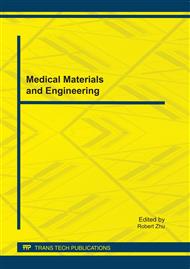[1]
Critiane. SM, Obdulio GM, Balbi ME, Extraction of lycopene from tomato sauce with mushrooms (Agaricus brasiliensis), determined by high-performance liquid chromatography. International Journal of Food Sciences and Nutrition, 60 (2009) 72-78.
DOI: 10.1080/09637480802090445
Google Scholar
[2]
Di Mascio P, Kaiser S, Sies H. Lycopene as the most efficient biological carotenoid singlet oxygen quencher, Arch Biochem Biophys. 274 (1989) 532-538.
DOI: 10.1016/0003-9861(89)90467-0
Google Scholar
[3]
Information on http://www.nal.usda.gov/fnic/foodcomp/ [2001].
Google Scholar
[4]
Heinonen MI, Ollilainen V, Linkola EK, Carotenoids in finish food: vegetables, fruits, and berries. J Agric Food Chem. 37 (1989) 655-659.
DOI: 10.1021/jf00087a017
Google Scholar
[5]
Tee ES and Lim L. Carotenoids composition and content of Malaysian vegetables and fruits by the AOAC and HPLC methods, Food Chem. 41 (1991) 309-339.
DOI: 10.1016/0308-8146(91)90057-u
Google Scholar
[6]
Mangels AR, Holden JM, Beecher GR, Carotinoid content of fruits and vegetables: an evaluation of analytical data, AM Diet Assoc. 93 (1993) 284-296.
Google Scholar
[7]
Giovanni, M. Response surface methodology and product optimization, Food Technology. 37 (1983) 41-45.
Google Scholar
[8]
Gan, C. Y., Abdul Manaf, N., & Latiff, A. A. Optimization of alcohol insoluble polysaccharides (AIPS) extraction from the Parkia speciosa pod using response surface methodology (RSM). Carbohydrate Polymers.79 (2010a) 825-831.
DOI: 10.1016/j.carbpol.2009.10.006
Google Scholar
[9]
Gan, C. Y., Abdul Manaf, N., & Latiff, A. A. Physico-chemical properties of alcohol precipitate pectin-like polysaccharides from Parkia speciosa pod. Food Hydrocolloids. 24 (2010b) 471-478.
DOI: 10.1016/j.foodhyd.2009.11.014
Google Scholar
[10]
Ge, Y., Ni, Y., Yan, H., Chen, Y., & Cai, T.. Optimization of the supercritical fluid extraction of natural vitamin E from wheat germ using response surface methodology, Journal of Food Science. 67 (2002) 239-243.
DOI: 10.1111/j.1365-2621.2002.tb11391.x
Google Scholar
[11]
Li, Q, H.,&Fu, C. L. Application of response surface methodology for extraction optimization ofgerminant pumpkin seeds protein, Food Chemistry. 92 (2005) 701-706.
DOI: 10.1016/j.foodchem.2004.08.042
Google Scholar
[12]
Qiao, D. L., Kea, C L., Hua, B., Antioxidant activities of polysaccharides from Hyriopsis cumingil, Carbohydrate Polymers. 78 (2009) 199-204.
DOI: 10.1016/j.carbpol.2009.03.018
Google Scholar
[13]
Wayne W. Fish, Penelope Perkins-Veazie, and Julie K. Collins. A quantitative assay for lycopene that utilizes reduced volumes of organic Solvents, Journal of food composition and analysis. 15 (2002) 309–317.
DOI: 10.1006/jfca.2002.1069
Google Scholar
[14]
Guo, X., Zou, X., &Sun, M. Optimization of extraction process by response surface methodology and preliminary characterization of polysaccharides from Phellinus igniarius, Carbohydrate Polymers, 80, (2010)344-349.
DOI: 10.1016/j.carbpol.2009.11.028
Google Scholar


